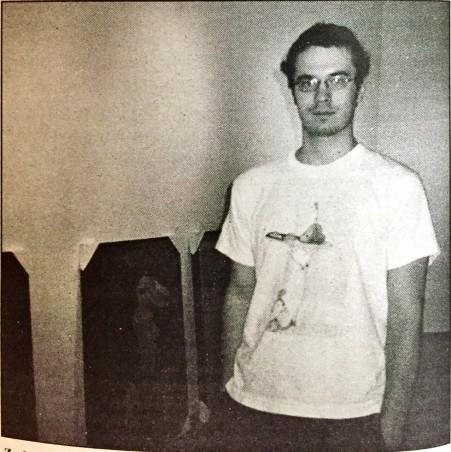By Samra Habib
It is a glimpse of art journals he’s kept for five years. Balint Zsako takes photos of various books, paintings and photos after magnifying their size and adds certain characteristics to reveal their intimate details.
Zsako, a fourth-year image arts student, is showcasing his exhibit, Books, at the Ryerson Gallery from Feb. 20 to March 2.
By taking a photograph of a smaller scale painting with a large format camera, and printing it at 30” x 40”, the lines created by every brush stroke become more pronounced. The pieces become a separate entity from their original context, thereby giving the work entirely different meanings.
He admits that producing these journals is an addiction. He has created 20 so far. His intent is to give the audience an accurate indication of what his journals are about through 14 pieces at the Gallery.
The juxtaposition in his work sparks curiosity. The minimal text, details and colours of a diagram of human anatomy from a biology textbook accompanies a journal entry about infatuation: “I think that she sees me as a friend, I mean; only a friend, as in: as romantically desirable as a good book on gardening.”
“I include everything in the journal that catches my eye,” Zsako says. “Sometimes it is interesting pictures, sometimes it is including text that is irrelevant to the pictures and other times it all goes together.”
A Hamilton native, whose father is a sculptor and mother a fibre artist, Zsako himself wanted to make art. When the time came to apply for universities, he made a decision to devote his studies to photography, seeing that his other choice, engineering, demanded more physics than he wanted to take.
His parents have kept everything that he created during his childhood. All of his work has been a reflection of his interests at the time.
“When I was little, it was cars and trucks, then later on, it became super heroes, and now it’s just different things that interest me,” Zsako says.
Robert Burley, gallery director at the Ryerson Gallery and an assistant professor at Ryerson’s Image Arts program is confident in Zsako’s work.
“He is someone who works quite intuitively. I think that his work is very strong and very successful,” Burley says.
Among many of Zsako’s art showings were his pinhole camera pieces at the Harbourfront Centre last summer. The pictures were black and white overlapping photographs taken from a 360 degree angle.
Zsako admits that selling some pieces would help him continue to work independently.
“This year, I’m certain that if it’s in any way possible, I would like to earn my living from making things and having people buy them. I don’t know how feasible that is, but I have to try.
“It’s not about getting enormous recognition, it’s about having enough money so that you can buy something to eat and pay the rent.”
Ah, to be a starving artist.











Leave a Reply